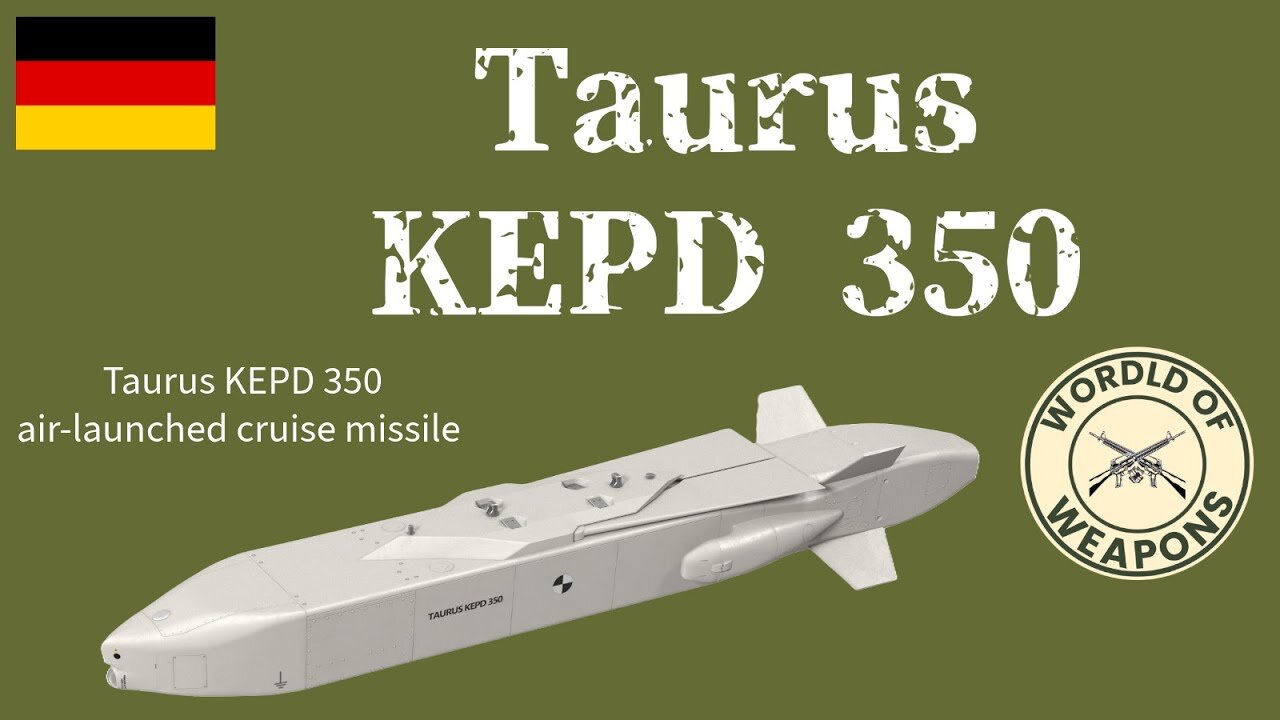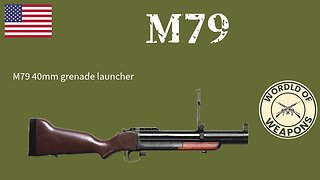Premium Only Content

Taurus KEPD 350 🇩🇪 The silent forbidden fruit of the German arsenal
Taurus KEPD 350 air-launched cruise missile
1.Introducition 00:00
2.Overview 00:40
3.Operation 02:07
The Taurus KEPD-350 is a German-Swedish air-launched cruise missile, manufactured by Taurus Systems and used by Germany, Spain, and South Korea. Taurus Systems GmbH is a partnership between MBDA Deutschland GmbH (formerly LFK) and Saab Bofors Dynamics.
In 1998, Germany funded the development of a powered system to be designated KEPD-350 with the acronym TAURUS (Target Adaptive Unitary and dispensor Robotic Ubiquity System).
Overview.:
The missile incorporates stealth technology and has an official range in excess of 500 km (300 mi).[5] It is powered by a turbofan engine. It can operate at Mach 0.95 and can be carried by Panavia PA-200 Tornado IDS, Eurofighter Typhoon EF-2000, Saab JAS-39C Gripen, McDonnell Douglas EF-18A+ Hornet, and McDonnell Douglas F-15K Slam Eagle aircraft.
The dual stage 480-kilogram (1,100 lb) warhead, called MEPHISTO (multi-effect penetrator highly sophisticated and target optimised), features a precharge and initial penetrating charge to clear soil or enter "hard and deeply buried targets" (HDBT) such as hardened underground bunkers, then a variable delay fuze to control detonation of the main warhead. The missile weighs about 1,400 kg (3,100 lb) and has a maximum body diameter of 1 metre (3.3 ft). Intended targets are hardened bunkers; command, control, and communications facilities, airfield and port facilities, ammunition storage facilities, ships in port or at sea, area target attack and bridges.
The missile includes countermeasures as a self-defence mechanism and electronic countermeasures.
Operation.:
Mission planners program the missile with the target, air defence locations and planned ground path. The missile uses a terrain-hugging flight path, guided by inertial navigation system (INS), image based navigation (IBN), terrain referenced navigation (TRN), and Global Positioning System (GPS) to the target. It is capable of navigating over long distances without GPS support.
Upon arrival the missile commences a bunt (climb) manoeuvre to achieve the best probability of target acquisition and penetration. During the cruise portion of the flight, a high resolution thermographic camera (infrared homing) can support navigation by using IBN and for GPS-free target attack. The missile attempts to match a camera image with the planned 3D target model (Digital Scene Matching Area Correlator, DSMAC). If it cannot, it defaults to the other navigation systems, or, to avoid collateral damage, it steers to a pre-designated crash point instead of risking an inaccurate attack.
-
 3:49
3:49
World Of Weapons
1 year agoM79 🇺🇸 The grenade laucher that had all the makings of a super killer
119 -
 LIVE
LIVE
SpartakusLIVE
2 hours agoVerdansk Duos w/ Nicky || Saturday Spartoons - Variety Later?!
207 watching -
 1:32:54
1:32:54
Jeff Ahern
4 hours ago $23.78 earnedThe Saturday Show with Jeff Ahern
75.9K9 -
 LIVE
LIVE
TheManaLord Plays
6 hours agoMANA SUMMIT - DAY 1 ($10,200+) | BANNED PLAYER SMASH MELEE INVITATIONAL
240 watching -
 LIVE
LIVE
Major League Fishing
2 days agoLIVE Tackle Warehouse Invitationals Championship, Day 2
174 watching -
 LIVE
LIVE
GamerGril
3 hours agoScream Queens 💕 Goth & Gore 💕 Unpossess
114 watching -
 LIVE
LIVE
CassaiyanGaming
6 hours agoMYSTIVITHON - 12 HOUR CHARITY STREAM 🌊
83 watching -
 2:14:16
2:14:16
Lara Logan
19 hours agoSTANDING AGAINST THE GLOBAL ELITE with Trump Ally President Milorad Dodik of Republika Srpska | Ep34
33.8K18 -
 LIVE
LIVE
FoeDubb
5 hours ago🏰KINGDOM MENU: 👑CHILL CONVO 🎮DELTA FORCE PEW PEWS WITH THE HOMIE ARROWTHORN DILLY DILLY!!!
33 watching -
 1:56:00
1:56:00
PixiEars_
3 hours agoBDAY STREAM
7.91K2